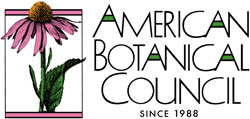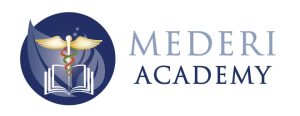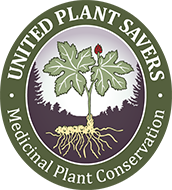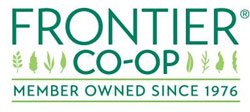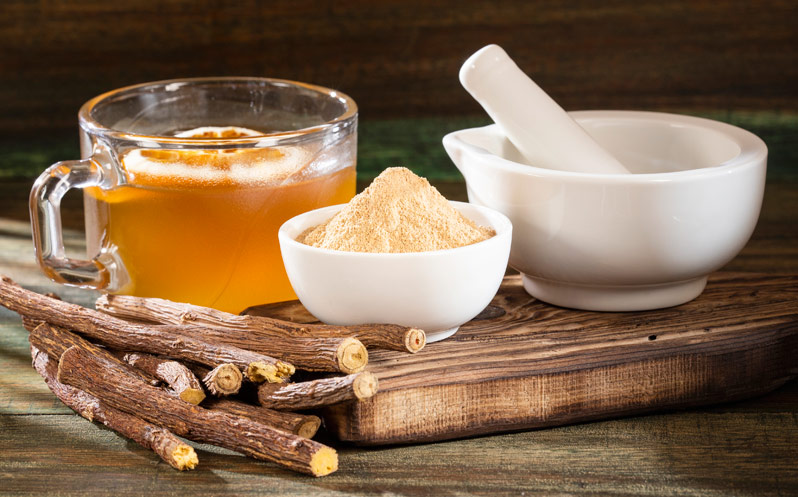
Glycyrrhiza glabra and Glycyrrhiza uralensis (licorice) are members of the pea family (Leguminosae). In Chinese lore, licorice became known as “sweet grass”, finding utility as a sweet flavoring and gaining respect in over two thousand years of recorded use as a potent medicinal plant 1.
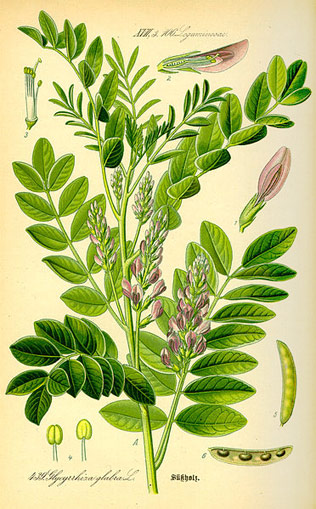 Licorice has well-documented antiviral, antibacterial and antifungal properties 2. Asian practitioners of traditional Chinese medicine (TCM) described its application for a multitude of conditions, many arising from its use in TCM as a unique “guide drug.” This “guide” effect is reportedly due to chemical transformation when interacting with other compounds, and also due to its effect on the CYP450 enzyme system in the liver 4. In nearly half of all Chinese herbal formulas, licorice was commonly combined with other herbs in a single prescription to enhance the effectiveness of the other ingredients, generally raise Qi, reduce toxicity, and to improve flavor 3.
Licorice has well-documented antiviral, antibacterial and antifungal properties 2. Asian practitioners of traditional Chinese medicine (TCM) described its application for a multitude of conditions, many arising from its use in TCM as a unique “guide drug.” This “guide” effect is reportedly due to chemical transformation when interacting with other compounds, and also due to its effect on the CYP450 enzyme system in the liver 4. In nearly half of all Chinese herbal formulas, licorice was commonly combined with other herbs in a single prescription to enhance the effectiveness of the other ingredients, generally raise Qi, reduce toxicity, and to improve flavor 3.
Many unique classes of molecules have been identified in licorice root extract. Among them are 20 triterpenoids and almost 300 flavonoids. Triterpenoids are natural glycosides with remarkable structure and bioactive diversity. They are becoming increasingly significant in the treatment of cancer due to their effectiveness and safety 5.
The flavonoids are a group of natural substances with polyphenolic structure found in fruits, vegetables, grains, bark, roots, stems, flowers and tea leaves. These natural compounds are well-known for their beneficial effects on health attributed to their antioxidant, anti-inflammatory, anti-mutagenic and anti-carcinogenic properties coupled with their capacity to modulate key cellular enzyme functions 6.
Eventually, all the compounds in licorice may be found to be of some medicinal service, but current research focuses on a few of these, namely glycyrrhizin (GL), glycyrrhizic acid (GA), liquiritigenin (LTG), licochalcone A (LCA), licochalcone E (LCE) and glabridin (GLD), the main active components that have been found to possess antiviral and antimicrobial activities 7. The antiviral components appear to be the triterpenoids glycyrrhizin (GL) and glycyrrhizic acid (GA).

Continuing Education
If you are a naturopathic physician interested in continuing education credits, visit our Naturopathic CE page.
Recent studies suggest that glycyrrhizin may inhibit hepatitis C virus (HCV) by targeting the release step in which hepatitis C viral particles infect cells 8. In fact, glycyrrhizin has been administered by intravenous injection for over 20 years to treat hepatitis C in Japan, and studies have found few side effects and marked reduction in progression toward cirrhosis and hepatocarcinoma 10.
Research on the antiviral effects of GL have also been summarized by Yoshihiro Matsumoto et al 8. This paper cites research reporting that GL had a membrane-stabilizing effect and reduced cell membrane fluidity. Since HCV uses cellular membrane structure in its lifecycle, it is theorized that this might be a means by which licorice root stops the spread of the virus 8.
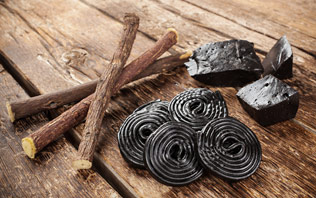
GL and GA have also been shown to possess other beneficial pharmacological activity, including anti-inflammatory, anti-tumor and anti-allergic effects. Mechanisms of the GL-induced anti-inflammatory effect appear to result from inhibition of thrombin-induced platelet aggregation, inhibition of prostaglandin E2 production and inhibition of phospholipase A2 (PLA2). Licorice root extract has a well-documented inhibitory effect on the metabolic pathway that breaks down cortisol in liver cells, and is so potent that those who have over-indulged in black licorice confections experienced a measurable rise in blood pressure 18. Caution: intake of licorice can lead to increased blood pressure (based on effects to increase sodium and decrease potassium) and should not be consumed by patients with hypertension!
In addition to the antiviral effects of GL reported on hepatitis C, many other viruses that cause human suffering have been successfully treated, including: herpes simplex type 1 (HSV-1), the “cold sore” virus; varicella-zoster virus (VZV), the cause of shingles; hepatitis A virus (HAV); hepatitis B virus (HBV); human immunodeficiency virus (HIV); severe acute respiratory syndrome (SARS), coronavirus; Epstein–Barr virus (EBV), human cytomegalovirus (CMV) and influenza virus 9.
As testimony to its anti-inflammatory properties, glycyrrhizin alleviated allergic asthma in an experimental mouse model, increased the IL-4 and IL-5 levels, decreased eosinophil counts and IgE levels, and upregulated total IgG2a in serum. These results indicated that glycyrrhizin interfered with the production of IgE by decreasing the IgE-stimulating cytokines 11. It also attenuated lung inflammation and mucus production in mice 12.
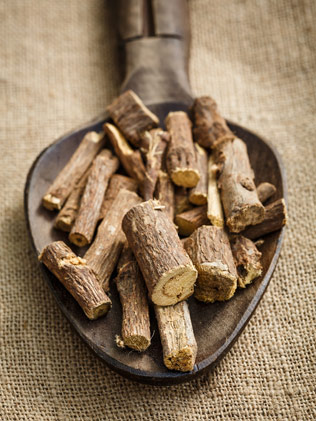
In the asthma model, glycyrrhizin provided oral relief of airway constriction and hyper-reactivity and pulmonary inflammation 13. The isolated licorice root flavonoid, isoliquiritigenin, was shown to relax the tracheal smooth muscle of guinea pigs in vitro and in vivo 14. The effects of glycyrrhetinic acid and liquiritigenin even suppressed passive cutaneous anaphylactic reactions. Flavonoids extracted from licorice root quenched pulmonary inflammation by inhibiting the recruitment of neutrophils, macrophages, and lymphocytes, and by suppressing the mRNA expression of TNF-α 19.
Diseases caused by bacterial infection exact a high toll on the world’s healthcare systems. Could licorice root extract be effective against the most virulent of these? Studies suggest that it could. In various countries, licorice has been examined for its antimicrobial properties, and it was found that G. glabra can inhibit the growth of Streptococcus mutans, Actinomyces viscosus, Streptococcus sanguis and Enterococcus faecalis even better than chlorhexidine, a well-known antibacterial agent 20.
Glabridin (GLD), another constituent of Glycyrrhiza glabra root, was found to be active against both yeast and filamentous fungi. Glabridin also reduced drug resistance in mutations of Candida albicans, the first report of this activity in drug-resistant bacteria 15.
In addition, extract of Glycyrrhiza glabra was shown to entirely inhibit poisonous aflatoxin production in Aspergillis fungi 16. Aflatoxin is a known carcinogen, and along with its fungal source, accounts for some 1.5 million deaths each year 17.
Licorice root has shown itself to be an effective protection against a broad spectrum of infectious agents. Its centuries-long history of use around the globe, in many cultures, is testimony to its efficacy, safety and cost effectiveness. It is a plant worth considering for our collective health, as we move forward into an increasingly complex world.
Note: The information on this site is provided as a research resource for health professionals and is not intended to replace diagnosis and treatment by a qualified health care practitioner. Consult your medical care provider before using any herbal medicine.
Meet Our Contributor:
Dr. Scott Tyler is a second generation Naturopathic Physician. He has practiced in Langley, BC for the past 33 years, where he resides on his family farm. Author of a soon to be released book on thyroid disease, he is also busy teaching and supervising student ND’s at British Columbia’s only school of Naturopathic Medicine in New Westminster, Canada.
References:
1. Shennong׳s Classic of Materia Medica, circa. 2100 BC.
2. Liqiang Wang, Rui Yang, Bochuan Yuan, Ying Liu, and Chunsheng Liu. School of Chinese Pharmacy, Beijing University of Chinese Medicine, Beijing, China. https://www.ncbi.nlm.nih.gov/pmc/articles/PMC4629407/
3. https://www.ncbi.nlm.nih.gov/pubmed/24201019 J Ethnopharmacol. 2013 Dec 12;150(3):781-90. doi: 10.1016/j.jep.2013.09.055. Epub 2013 Nov 5.
4.Wang X1, Zhang H, Chen L, Shan L, Fan G, Gao X. https://www.ncbi.nlm.nih.gov/pubmed/24201019. Liquorice, a unique “guide drug” of traditional Chinese medicine: a review of its role in drug interactions.
5. Jun-RongDu – Research Progress on Natural Triterpenoid Saponins in the Chemoprevention and Chemotherapy of Cancer. https://www.sciencedirect.com/science/article/pii/B9780128022153000069 Jun-RongDu, Fang-YiLong, ChuChen. Department of Pharmacology, West China School of Pharmacy, Sichuan University, Chengdu, P.R. China. Institute of Pharmaceutical Research, Sichuan Academy of Chinese Medicine Sciences, Chengdu, P.R. China.
6. https://www.ncbi.nlm.nih.gov/pmc/articles/PMC5465813/
7. https://www.ncbi.nlm.nih.gov/pmc/articles/PMC4629407/#!po=15.2174
8. Matsumoto, et al. https://www.ncbi.nlm.nih.gov/pmc/articles/PMC3715454/
9. https://www.ncbi.nlm.nih.gov/pmc/articles/PMC3715454/
10. Van Russom, et al Alimentary Pharm & Therapeutics (2001) Glycyrrhizin as a potential treatment for chronic hepatitis C https://onlinelibrary.wiley.com/doi/full/10.1046/j.1365-2036.1998.00309.x
11. Ram – Int Immunopharmacol. 2006 Sep;6(9):1468-77. Epub 2006 Jun 6. Glycyrrhizin alleviates experimental allergic asthma in mice. https://www.ncbi.nlm.nih.gov/pubmed/16846841
12. Menegazzi et al., 2008; Nishimoto et al., 2010. Glycyrrhizin attenuates the development of carrageenan-induced lung injury in mice. https://www.sciencedirect.com/science/article/abs/pii/S1043661808001011
13. Ram A. et al (2006) Glycyrrhizin alleviates experimental allergic asthma in mice. https://www.ncbi.nlm.nih.gov/pubmed/16846841
14. (Liu et al., 2008)- https://www.ncbi.nlm.nih.gov/pubmed/18462716
15. A. N. Panche, A. D. Diwan, and S. R. Chandra. Flavonoids: an overview. https://www.ncbi.nlm.nih.gov/pubmed/19170157.
16. Rashin Mohseni, Fatemeh Noorbakhsh, Maryam Moazeni, Ayatolah Nasrollahi Omran, Sassan Rezaie.
Antitoxin Characteristic of Licorice Extract: The Inhibitory Effect on Aflatoxin Production in Aspergillus parasiticus
https://onlinelibrary.wiley.com/doi/abs/10.1111/jfs.12104
17. https://www.aspergillus.org.uk/content/how-fungi-kill-millions-globally.
19. Xie et al., 2009 – https://www.ncbi.nlm.nih.gov/pubmed/19071231
20. Avicenna Journal of Phytomedicine https://docksci.com/antibacterial-activity-of-glycyrrhiza-glabra-against-oral-pathogens-an-in-vitro-_5ac92976d64ab29f06f3199c.html
21. https://en.wikipedia.org/wiki/Hepatitis_C “Global, regional, and national incidence, prevalence, and years lived with disability for 310 diseases and injuries, 1990-2015: a systematic analysis for the Global Burden of Disease Study 2015”. Lancet. 388 (10053): 1545–1602. doi:10.1016/S0140-6736(16)31678-6. PMC 5055577. PMID 27733282.



